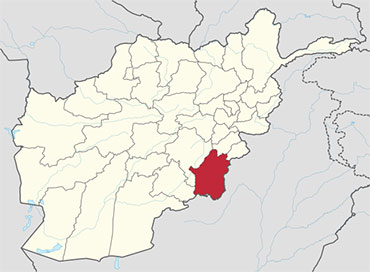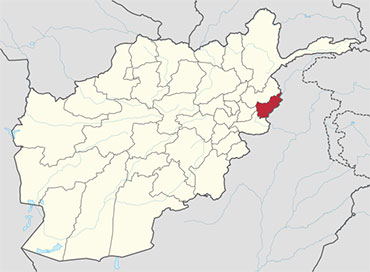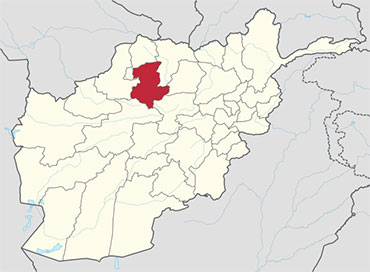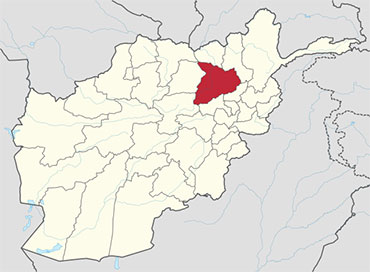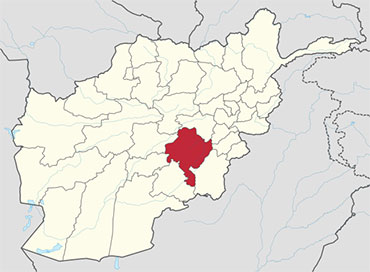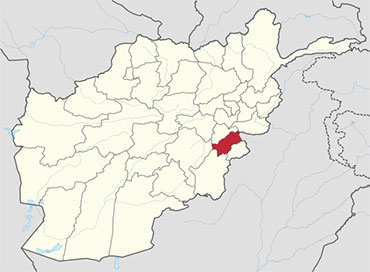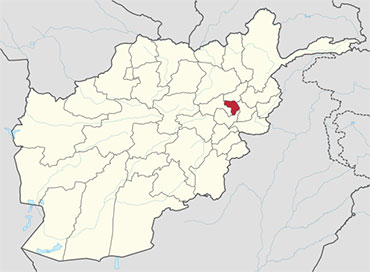 Kapisa is one of the 34 provinces of Afghanistan. Located in the north-east of the country. Its capital is Mahmud-i-Raqi, and other districts include Kohistan, Nijrab and Tagab. The population of Kapisa is estimated to be 364,900, although there has never been an official estimate. The province covers an area of 1,842 km² making it the smallest province in the country, however it is the most densely populated province apart from Kabul Province.
Kapisa is one of the 34 provinces of Afghanistan. Located in the north-east of the country. Its capital is Mahmud-i-Raqi, and other districts include Kohistan, Nijrab and Tagab. The population of Kapisa is estimated to be 364,900, although there has never been an official estimate. The province covers an area of 1,842 km² making it the smallest province in the country, however it is the most densely populated province apart from Kabul Province.
History
The earliest references to Kapisa appear in the writings of fifth century BCE Indian scholar Pāṇini. Pāṇini refers to the city of Kapiśi, a city of the Kapisa kingdom, modern Bagram. Pāṇini also refers to Kapiśayana, a famous wine from Kapisa. The city of Kapiśi also appeared as Kaviśiye on Graeco-Indian coins of Apollodotus I and Eucratides.
Archeological discoveries in 1939 confirmed that the city of Kapisa was an emporium for Kapiśayana wine, bringing to light numerous glass flasks, fish-shaped wine jars, and drinking cups typical of the wine trade of the era.[8] The grapes (Kapiśayani Draksha) and wine (Kapiśayani Madhu) of the area are referred to in several works of ancient Indian literature. The epic Mahabharata also mentions the common practice of slavery in the city.
Based on the account of the Chinese pilgrim Xuanzang, who visited in AD 644, it seems that in later times Kapisa was part of a kingdom ruled by a Buddhist kshatriya king holding sway over ten neighboring states, including Lampaka, Nagarahara, Gandhara, and Banu. Xuanzang notes the Shen breed of horses from the area, and also notes the production of many types of cereals and fruits, as well as a scented root called Yu-kin.
Kapisa province under the Mauryan Empire rule
The Kapisa province territory fell to the Maurya Empire, which was led by Chandragupta Maurya. The Mauryas introduced Hinduism and Buddhism to region, and were planning to capture more territory of Central Asia until they faced local Greco-Bactrian forces. Seleucus is said to have reach a peace treaty with Chandragupta by given control of the territory south of the Hindu Kush to the Mauryas upon intermarriage and 500 elephants.
Having consolidated power in the northwest, Chandragupta pushed east towards the Nanda Empire. Afghanistan’s significant ancient tangible and intangible Buddhist heritage is recorded through wide-ranging archeological finds, including religious and artistic remnants. Buddhist doctrines are reported to have reached as far as Balkh even during the life of the Buddha (563 BCE to 483 BCE), as recorded by Xuanzang.
In this context a legend recorded by Xuanzang refers to the first two lay disciples of Buddha, Trapusa and Bhallika responsible for introducing Buddhism in that country. Originally these two were merchants of the kingdom of Balhika, as the name Bhalluka or Bhallika probably suggests the association of one with that country. They had gone to India for trade and had happened to be at Bodhgaya when the Buddha had just attained enlightenment.
Just like the rest of Afghanistan, many historical sites in Kapisa have also been looted by smugglers and then sold abroad. During 2009 to 2010 twenty-seven relics were discovered by the National Security forces; these included ancient relics belonging to 2 BC and 4 BC mostly from Kohistan district. It was part of Delhi Sultanate, Khilji dynasty in particular.
Geography
Kapisa province is located 80 km north east of Kabul a stark mountain moonscape that for centuries was home to gunmen who preyed on travelers and harassed invaders in the narrow mountain passes. As recently ambushes of NATO troops were not uncommon. It is bordered from the north by Panjshir Province, from the east by Laghman Province, from the south by Kabul province and from the south west by Parwan province. The province covers an area of 1,842 km²; that makes it the smallest province in all of Afghanistan. Kapisa Province’s terrain is a mixture of high peaks, mountainous river valleys, and shallow central plains; the highest points of the province are in the east, on the borders with Panjsher and Laghman Provinces.[35] The province is a strategic crescent that was fought over by many invaders since dawn of time and as recently as the British in the 19th century, the Russians in the 20th century and now the NATO coalition.
Healthcare
The percentage of households with clean drinking water fell from 27% in 2005 to 15% in 2011.[42] The percentage of births attended to by a skilled birth attendant fell from 12% in 2005 to 7% in 2011.
Districts
Kabul province is divided into about 7 districts.
| District | Population | Area |
|---|---|---|
| Alasay | 38,642 | |
| Hesa Awal Kohistan | 64,483 | |
| Hesa Duwum Kohistan | 45,962 | |
| Koh Band | 24,001 | |
| Mahmud Raqi | 65,632 | |
| Nijrab | 114,726 | |
| Tagab | 82,564 |
